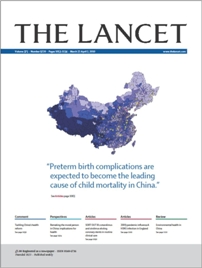I recently came across a commentary published in The Lancet (journal), entitled ‘Can we reverse the rising tide of compulsory admissions?’. In this short paper, the author (Sonia Johnson) outlines potential explanations for the rising tide of compulsory psychiatric admissions in the UK in the last 2 decades, and looks at the potential role of Community Treatment Orders (CTOs) in affecting this rapid increase in compulsory admissions.

The paper raises important questions as to whether and how the evidently high levels of use of CTOs in England can be justified, and as to how valid arguments that CTOs infringe human rights are. Reproduced below are the sections of the paper relating to the above mentioned issues.
Comment by Sonia Johnson
Can we reverse the rising tide of compulsory admissions?
‘The UK has achieved some success in shifting mental health care from institutional to community settings, but with one important and disappointing limitation. Compulsory admissions have risen steadily over the past two decades in the UK and in some other countries undergoing similar deinstitutionalisation processes [1,2]. Possible service-related explanations include shortages of acute beds, resulting in delayed admissions and early discharges of people who remain unwell, increasingly risk-averse clinicians [3], patients’ reluctance to be admitted to crowded and unpleasant wards [4], and the closure of long-stay wards, resulting in more people with severe illnesses residing in the community. Candidate societal contributing factors include rises in social exclusion and isolation, or in substance misuse among the mentally ill [5,6], and a decline in deference that could make patients less inclined to do as professionals instruct [7].
We have insufficient data to allow us to assess these potential explanations. Still more pressing is the need for an evidence-based remedy for this worrying rise in compulsory admissions. Unfortunately, provision of alternatives to admission, such as intensive home treatment, does not by itself reduce compulsory admissions [1,2,8]. As such, the findings of a study by Tom Burns and colleagues [9] published in the journal The Lancet is of considerable importance. The authors present a high-quality assessment of a strategy for attempting to turn back the rising tide of compulsory admissions.
The above mentioned study is remarkable as a randomised trial of a new legal power (legislation is rarely tested so rigorously). Supervised Community Treatment Orders (CTOs) were introduced inEnglandandWalesin 2008 through the addition of new sections to the 1983 Mental Health Act [10]. People detained for treatment in hospital under the Mental Health Act can be placed on a CTO on discharge. Conditions with which they are expected to comply vary, but very often include contact with a mental health team and adherence to medication.
If conditions are breached, they can be recalled to hospital. The purpose of CTOs is to allow a group of patients with a history of frequent compulsory admissions to be safely and effectively managed in the community. The findings of the aforementioned study indicate that CTOs have no effect on patterns of admission—this outcome should not be surprising, since it replicates the limited international evidence [11]. However, the continuing rise in compulsory admissions throughout England since the introduction of CTOs is congruent with the trial’s findings [12].
Can the continuing availability and use of CTOs now be justified? In my clinical practice, CTOs have on occasion seemed the most promising strategy within available resources for stabilising certain frequently admitted people who are difficult to engage and seem to present a substantial risk. Higher than anticipated levels of use suggest other clinicians feel the same. However, clinical impressions unsubstantiated by evidence cannot be sufficient to justify CTOs. A strong respect for civil liberties is imperative for professionals entrusted with coercive powers, and arguments that CTOs infringe human rights seem persuasive if benefits cannot be shown [13].
The large amounts of senior professional time currently invested in CTO implementation also need to be clearly justified. Thus, the case for urgent review of this legislation, both at government level and within the professions involved in CTO use, is now strong. If the continued use of CTOs is contemplated, further evidence regarding their effect will need urgently to be sought, for example through large-scale collation and analysis of routine data already recorded since their introduction. Such analyses could allow comparisons over a longer period between groups of otherwise similar patients managed with or without CTOs.
The above mentioned study provides no clear means of turning back the slowly rising tide of compulsory admissions. Regarding future strategies, the door remains open for further attempts to reduce compulsory admissions by engaging service users more effectively in decisions about their care. However, widespread implementation might require a substantial cultural shift in relationships between patients and professionals. An important question is whether the long-established but little evaluated UK Care Programme Approach is really a useful framework for fostering greater equality and collaboration between service users and staff.
More engaging and acceptable continuing community care, as seems to be provided by Early Intervention Services [3], might in itself reduce compulsory admissions, and could also be a fruitful context for joint crisis plans. Making inpatient environments less aversive and improving the quality of staff-patient alliances in these settings could also result in less need for compulsory admissions. We do not yet know whether changing relationships between staff and patients can reverse the continuing rise in compulsory admissions, but, with the apparent failure of CTOs, we need to keep trying’.
REFERENCES
1 Keown P, Weich S,BhuiKS, Scott J. Association between provision of mental illness beds and rate of involuntary admissions in the NHS in England1988–2008: ecological study. BMJ 2011; 343: d3736.
2 Wierdsma AI, Mulder CL. Does mental health service integration aff ect compulsory admissions? Int J Integr Care 2009; 9: e90. http://www.ijic.org/ index.php/ijic/article/viewArticle/324/646 (accessed Feb 28, 2013).
3 Schizophrenia Commission. The abandoned illness.London: The Schizophrenia Commission, 2012.
4 Jones J, Nolan P, Bowers L, et al. Psychiatric wards: places of safety? J Psychiatr Ment Health Nurs 2010; 17: 124–30.
5 Tew J, Ramon S, Slade M, Bird V, Melton J, Le Boutillier C. Social factors and recovery from mental health difficulties: a review of the evidence. Br J Social Work 2012; 42: 443–60.
6 Crawford V, Crome IB, Clancy C. Co-existing problems of mental health and substance misuse (dual diagnosis): a literature review. Drugs Educ Prev Pol 2003; 10: 1–74.
7 Rowe R, Calnan M. Trust relations in health care—the new agenda. Eur J Public Health 2006; 16: 4–6.
8 Johnson S, Nolan F, Pilling S, et al. Randomised controlled trial of acute mental health care by a crisis resolution team: the north Islington crisis study. BMJ 2005; 331: 599–602.
9 Burns T, Rugkåsa J, Molodynski A, et al. Community treatment orders for patients with psychosis (OCTET): a randomised controlled trial. Lancet 2013; published online March 26. http://dx.doi.org/10.1016/S01406736(13)60107-5.
10 Rugkåsa J, Burns T. Community treatment orders. Psychiatry 2009 8: 493–95.
11 Kisely SR,CampbellLA,PrestonNJ. Compulsory community and involuntary outpatient treatment for people with severe mental disorders. Cochrane Database Syst Rev 2011; 2: CD004408.
12 Health and Social Care Information Centre (Government Statistical Service). Inpatients formally detained in hospitals under the Mental Health Act 1983, and patients subject to supervised community treatment, Annual figures,England, 2011/12. https://catalogue.ic.nhs.uk/publications/mental-health/legislation/inp-det-m-h-a-1983-sup-com-eng-11-12/inp-det-m-h-a-1983-sup-com-eng-11-12-rep.pdf (accessed Feb 28, 2013).
13 Khurmi S, Curtice M. The supervised community treatment order and the Human Rights Act 1998. Adv Psychiatr Treat 2010; 16: 263–71.
